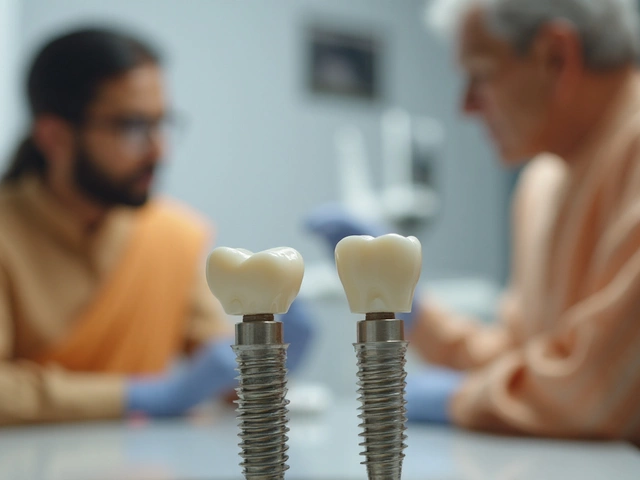Dealing with stiffness after knee replacement surgery? You're not alone. Many face this issue, but the good news is that there are ways to manage and reduce stiffness effectively. The article explores practical strategies and facts that help improve knee flexibility post-surgery, providing a smoother recovery journey.
Read MoreKnee Stiffness: What It Is and How to Fix It
If you’ve ever tried to stand up after sitting for a while and felt a tight band around your knee, you know how frustrating stiffness can be. It’s not just an annoying feeling – it can limit your daily moves, make workouts painful, and even signal something deeper. The good news? Most knee stiffness can be eased with a few practical changes, and you don’t need a fancy clinic to start feeling better.
What Makes Knees Stiff?
Stiffness usually shows up when the tissue around your joint loses its smooth glide. A few common culprits are:
- Age‑related wear: Cartilage gets thinner over time, and the joint fluid may not lubricate as well.
- Inflammation: Conditions like osteoarthritis or rheumatoid arthritis cause swelling that locks the joint.
- Inactivity: Sitting for long periods or avoiding movement makes the muscles and tendons tighten.
- Improper footwear: Shoes that don’t support your arch force the knee to work harder, leading to tightness.
- Diet: Too many processed foods can increase systemic inflammation, making joints less flexible.
Understanding the root cause helps you pick the right fix. For example, if inflammation is the main driver, anti‑inflammatory foods and gentle stretching can do wonders. If inactivity is the issue, a short daily routine of movement will gradually restore fluid flow.
Quick Ways to Reduce Knee Stiffness
Start with these easy habits that fit into any schedule:
- Gentle warm‑up: Before you sit or exercise, swing your leg in circles for 30 seconds each direction. This pumps synovial fluid into the joint and eases the initial tightness.
- Targeted stretches: Try a standing quad stretch (hold your ankle, pull gentle) and a seated hamstring stretch (reach for your toes) for 20‑30 seconds each. Consistency is key – aim for three sets a day.
- Strengthen surrounding muscles: Simple wall‑sits or seated leg lifts strengthen the quadriceps without heavy load, supporting the knee and reducing strain.
- Ice or heat: Ice for acute inflammation (15 minutes, a few times a day) and heat for chronic tightness (warm towel 10 minutes) can both improve mobility.
- Anti‑inflammatory diet: Add turmeric, ginger, leafy greens, and omega‑3 rich fish to meals. Cut back on sugary snacks, fried foods, and excess red meat.
These steps don’t require a gym membership; a few minutes each morning and evening can make a noticeable difference within weeks.
When should you see a professional? If stiffness persists after two weeks of home care, if you notice swelling, locking, or sharp pain, or if you’ve had a recent injury, book an appointment with an orthopedic doctor. They can assess for underlying issues like meniscus tears or severe arthritis and suggest treatments such as physiotherapy, injections, or, in rare cases, surgery.
Remember, knee stiffness is often a signal that your body needs a little extra attention. By moving consistently, eating smart, and listening to pain cues, you’ll keep your knees flexible and ready for everything from daily chores to weekend hikes.





